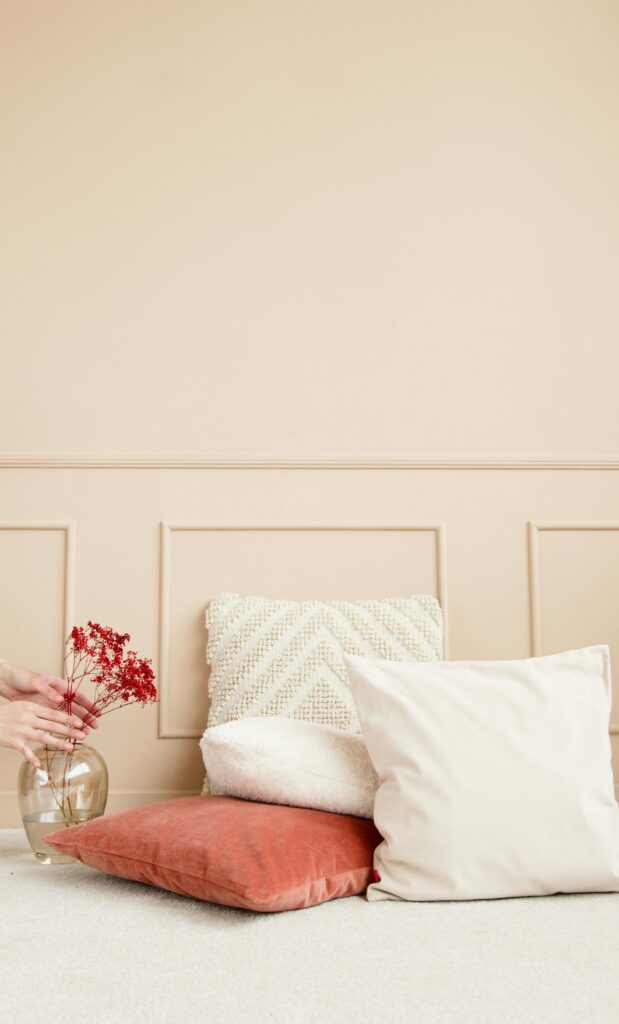
It’s a pretty safe assumption that wool pillows might have been among the world’s earliest, considering sheep were domesticated around 10,000 years ago. The oldest wool garments are dated as far back as 3000 BC, so it probably didn’t take long for people to figure out that wool could make a decent pillow filling.
Curious, I decided to give a high-quality organic wool pillow a try. Along the way, I learned some interesting things.
1. Should you worry about wool allergies?
Wool allergies are not fully understood, but they’re believed to come from wool alcohols. More often than not, people mistake wool sensitivity for an allergy. The coarse fibers can irritate sensitive skin, leading to discomfort that feels like an allergic reaction, even though it’s just a sensitivity.
2. Are wool pillows dust mite resistant?
Just about every pillow seems to be advertised as dust mite resistant these days, but dust mites aren’t after your pillow—they want the dead skin and oils left behind in your bedding. This organic material can get trapped in the pillow, creating a feast for mites. As it turns out, many so-called wool allergies are actually reactions to dust mites nestled in the wool fibers. So don’t buy into claims that wool pillows are fully dust mite resistant.
3. Does “humane” wool exist?
PETA has raised concerns about wool production with campaigns showing harsh treatment of sheep on industrial farms. While such cruelty exists, it’s not the norm. There are farms that prioritize responsible, humane wool production. Critics argue that if PETA acknowledged these farms, they could collaborate to promote better treatment of animals. So, if you’re confident in your supplier and have a more flexible view of “humane,” you can find responsibly sourced wool pillows.
My wool pillow experience
When my wool pillow finally arrived, I was intrigued but skeptical. The idea of pressing my face into wool didn’t exactly scream comfort to me, likely because wool often gets associated with itchy sweaters. But, when I took it out of the box, I was
pleasantly surprised—no itchiness or roughness.
The pillow came with a zippered cover, a feature I always appreciate. It allows you to adjust the loft (thickness) to suit your sleeping style. High loft works best for side sleepers, while stomach and back sleepers benefit from a lower loft. Fortunately, my pillow’s default loft seemed just right.
When I unzipped the cover to inspect the wool, the filling was soft, compressible, and elastic, much like polyester fiberfill pillows. But then came the smell.
Sniff, sniff—what’s that smell?
The pillow had an unmistakable farm-like odor—not overwhelming but still unpleasant. It wasn’t mold, sweat, or something worse, but it definitely wasn’t good. I hoped washing it would help.
Wool pillow vs. VOCs
While the smell was off-putting, I found it less bothersome than the strong chemical odors some foam pillows have, which come from volatile organic compounds (VOCs). The potential health risks of VOCs are still unclear, but their off-gassing is enough to steer me away from most memory foam pillows. So, in this sense, the wool pillow wasn’t all bad.
First night with the wool pillow
The wool pillow felt similar to polyester fiberfill—it wasn’t easily moldable or pliable, so it didn’t provide great support for my neck and head. It kept its shape rather than adapting to pressure like a down or buckwheat pillow would. However, its
breathability was a win; it didn’t trap heat the way conventional pillows do. Unfortunately, the smell kept waking me up throughout the night.
Second night: The wash experiment
Determined to give it another try, I followed the manufacturer’s washing instructions: delicate cycle, cold water, and low-heat drying. Sadly, it only made things worse. The pillow emerged lumpier and even stinkier, reminiscent of a wet
dog. Despite my attempts to fluff and massage it back into shape, the pillow was beyond saving.
Final verdict
While wool may work wonders for clothing, it falls flat as pillow filling. Wool pillows tend to lose their shape, clump easily, and sometimes come with an unpleasant odor. In my case, the smell was unbearable, and the pillow didn’t hold up after washing. For a better sleep experience, I’d recommend exploring alternatives like down or
buckwheat pillows—they provide better support and comfort without the drawbacks I encountered with wool.


